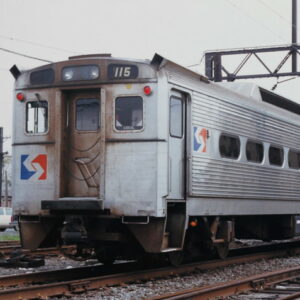Despite steep drops in ridership during the COVID pandemic and ensuing revenue losses, the Southeastern Pennsylvania Transportation Authority (SEPTA) remains on track to deliver improvements to the system– including the much-ballyhooed $2 billion King of Prussia extension to the Norristown High Speedline.
That’s because a large chunk of the funding– 50 percent– will come from the federal government, with the transit agency, state, and Montgomery County expected to pony up the remainder. The King of Prussia Rail project, which adds four miles to the high-speed line, taking it from Norristown to King of Prussia, received its Final Environmental Impact Statement (FEIS) approval in January. It currently runs from the 69th Street Terminal in Upper Darby through Delaware County and the Main Line to Norristown.

While businesses look forward to customers and workers riding the rails to their doorstep, the Philly Transit Riders Union recently cried foul.
“The King of Prussia Rail project is still tentative and years away from completion, while transit riders and workers have been dealing with crowded buses on truncated routes through the whole pandemic,” said Nat Lownes of the riders coordinating committee. “SEPTA chose to divert $40 million dollars in CARES funding toward this project instead of running more service. As the local economy recovers from the shock of the pandemic, we need to get essential workers back on the transit system we already have, and make sure they feel safe using it.”
“Under the CARES Act, SEPTA received $643 million dollars for ‘targeted operating budgets’– this is money from the federal government intended to pay the workers who keep SEPTA running,” the riders’ group said in a statement to the press. But in February the SEPTA Board voted to shift some of that money, funding the King of Prussia Rail project instead. “While this financial maneuver may not violate the law, it does ignore the intention of the CARES Act. This money was intended to keep transit running through the crisis, not for planning new construction projects,” the statement said.
Jody Holton, SEPTA assistant general manager of planning and strategic initiatives, agreed some of the CARES money was diverted. However, she explained SEPTA needed to continue to pay Amtrak for leases to use the regional rail system and using CARES Act funds for that expense “freed up funding in the capital budget for this project.”
With the environmental approval in hand, the next step will be the 30 percent design phase that needs to be completed before the agency can apply for funding from the Federal Transit Agency. Holton said. This phase–which will include station siting and architectural design, track alignment, stormwater management and land acquisition decisions, will take about 18 months leading to groundbreaking between 2024 and 2026, she said, depending the availability of on federal funding.
By greenlighting the 30 percent design phase, SEPTA will “keep the project together and move forward as efficiently as possible,” Holton said. And, despite pandemic problems, the Elwyn to Middletown Township extension of the Media/Elwyn Regional Rail Line is scheduled to be open in late spring of 2022 and improvements are also coming to the Philadelphia trolley system, she said.
Government and business leaders, meanwhile, are on board with the King of Prussia Rail plan.
The completion of the Final Environmental Impact Statement and the commitment to fund the next phase of design are major milestones for the KOP Rail project and we are excited to see it moving forward,” said Valerie Arkoosh, chair of the Montgomery County Board of Commissioners. “It has the power to transform both King of Prussia and Norristown, the county seat, by connecting them to the region’s other top employment centers with frequent and reliable transit. Soon our region will emerge from the pandemic into an economy ready to rebound. It’s more important now than ever to invest in our transit infrastructure.”
Ryan Rosenbaum, executive director of the Montgomery County Chamber of Commerce, said the high-speed line extension would have multiple stops in King of Prussia and will not only bring shoppers and workers to the area but will also reduce area traffic and the “carbon footprint.” SEPTA officials estimate the number of average daily riders will double to 9,500 by 2040.
“We only see an upside to this project for the Philadelphia region,” said Eric Goldstein, executive director of the King of Prussia District, a nonprofit improvement agency and booster for the town, which is home to the largest mall on the east coast. “King of Prussia Rail will connect the three largest employment centers of Center City, University City, and King of Prussia. We believe the project will provide a significant boost in economic development activity and job growth. It will also make the Philadelphia region much more competitive on a national, and even international, stage when it comes to attracting investment.”
For more information about the King of Prussia Rail: https://www.kingofprussiarail.com/

